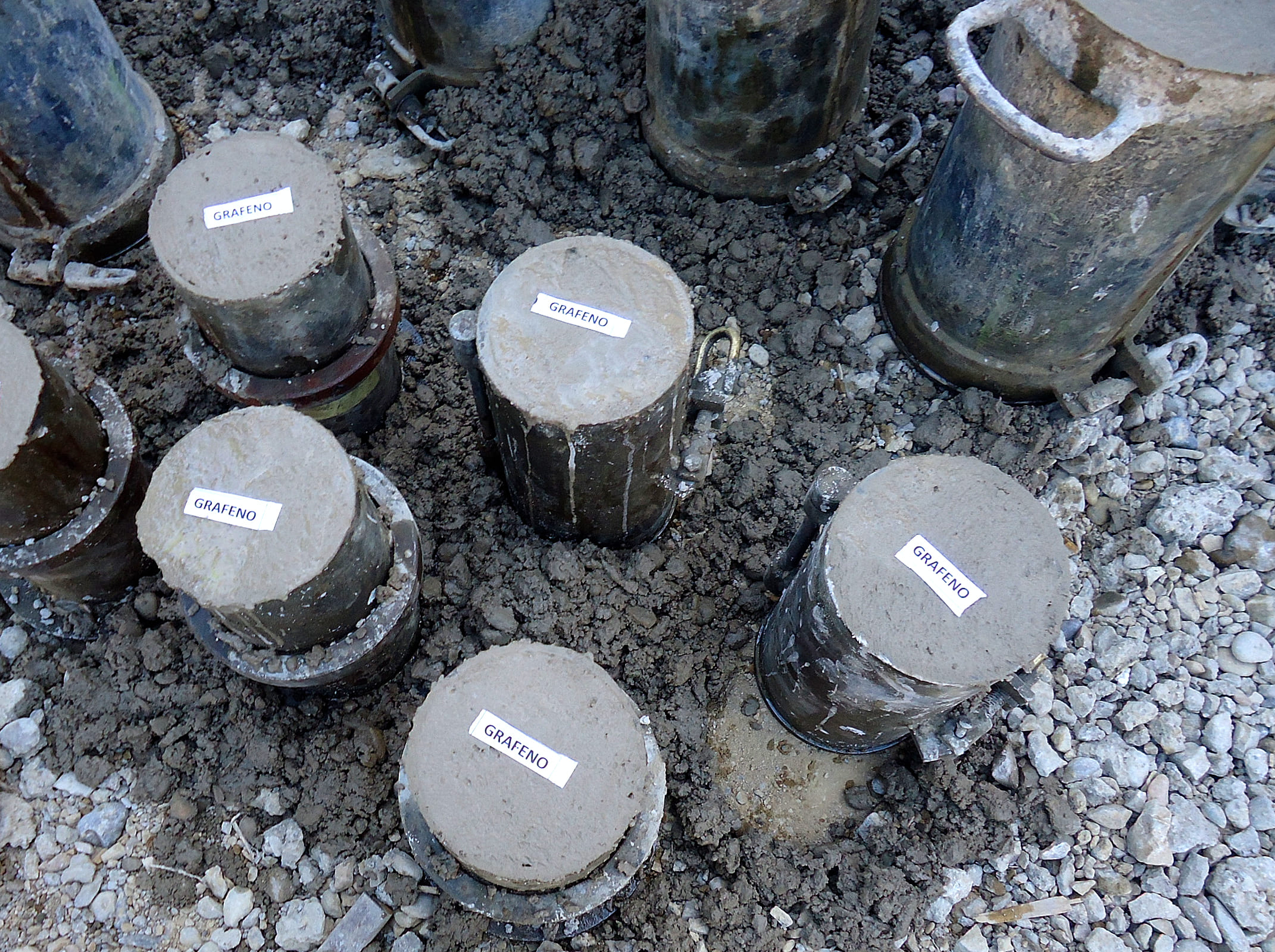The new substance has proven successful on a non-structural element of the Almudévar reservoir project
Madrid, 17 June 2022. Lantania, Graphenea Advanced Materials and the Polytechnic University of Madrid (UPM) have developed an innovative additive that enhances the expected useful life of concrete by 50%, as well as its resistance to adverse environmental conditions and its mechanical behaviour. After verifying its effectiveness in the laboratory, the new additive was tested on a non-structural element of the Almudévar Reservoir construction project.
The test was conducted by adding an improved graphene admixture to concrete with a 30 MPa compressive strength. Its overall efficacy was evaluated during mixing in the concrete plant, when still fresh and through noting the effects on the concrete during transport and placement. Mechanical behaviour and durability tests in aggressive environments were then carried out.
The main benefit of this innovative additive for cement and concrete is a significant improvement in durability, which ensures greater sustainability for infrastructures built using the admixture. The element was designed with ease of use for application in large-scale construction projects in mind. The next step will be the commercialisation of the product for use on a more industrial scale.
“This new additive is undoubtedly a step forward in improving infrastructure sustainability. By increasing its durability, we can make concrete a more environmentally friendly material,” says Lantania’s president, Federico Ávila. Graphenea’s CEO, Jesús de la Fuente, is “very proud of the hard work of the joint team of Lantania, UPM and Graphenea team that has created this innovative additive. This is a ground-breaking innovation in the sustainability and efficiency of infrastructure construction projects.”
Lantania, Graphenea Advanced Materials and UPM started their research on the use of optimised graphene admixtures in concretes at the end of 2020. The project was carried out in three phases. In the first phase, testing was done on the graphene additives upgraded for use in concrete via cement pastes developed in the UPM’S Department of Civil Engineering: Construction of the ETSICCP (Higher Technical School of Civil Engineering). In the second phase, laboratory tests were performed on concrete. Lastly, on-site application concluded the third phase.
Lantania has implemented graphene concrete into one of its projects, the Almudévar dam. Meanwhile, the UPM has evaluated the mechanical, durability and microstructural characterisation properties of the mixtures, with Graphenea providing the graphene materials needed for research development and possible commercial use.
About Lantania
The Lantania Group builds large transport, water and energy infrastructures. It develops sustainable solutions that improve quality of life and promote a cleaner and healthier world. Lantania has a portfolio of work in progress of over 400 million euros and assets of over 125 million euros. The maintenance of the runways of the Adolfo Suárez-Madrid Barajas Airport, the electrification of the first section of the high-speed train to Extremadura, the urbanisation of the Central Breakwater of the Port of Bilbao expansion or the construction of a solar plant in the City of Justice in Valencia are some of Lantania’s outstanding projects. The company has offices in Colombia, Morocco and Bulgaria.
About Graphenea and Graphenea Advanced Materials
Graphenea is a technology company created in 2010 specialised in the production of graphene, it has clients in more than 60 countries and offices in San Sebastián (Spain) and Boston (USA). Through research and innovation, Graphenea supports its customers by producing new forms of graphene from graphene field effect transistor chips to graphene oxides, whilst maintaining its leadership in the expanding graphene production sector. Graphenea Advanced Materials has a mission to transform industrial sectors with their graphene-based additives that create added value and increase the performance of materials.
About Universidad Politécnica de Madrid
The Department of Civil Engineering: Construction of the ETSICCP of the Universidad Politécnica de Madrid has been developing for more than twenty years an extensive R+D+i activity in the field of cement-based materials. Its activity has allowed the development of more durable mortars and concretes with better mechanical properties through the incorporation of nano additions and nano additives. The study and modification of the microstructure of cement has made it possible to achieve the macroscopic scale properties of mortars and concretes with improved performance demanded today by the sustainable construction sector, such as high durability concretes at early ages or very high strength and durability concretes, among others. This research group is formed by more than twenty investigators, four of them university professors, and has published more than two hundred papers on the subject, most of them in high impact scientific journals.
